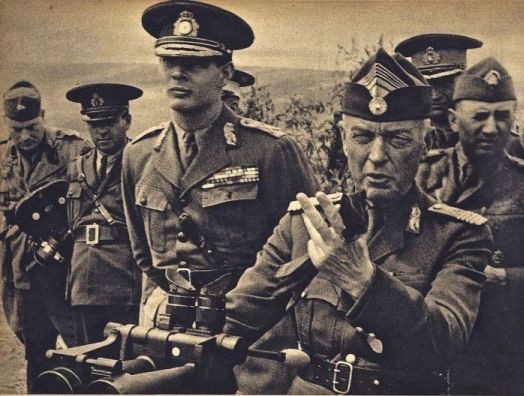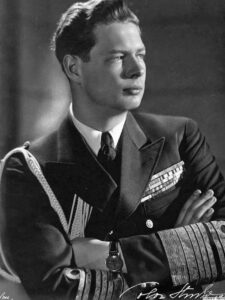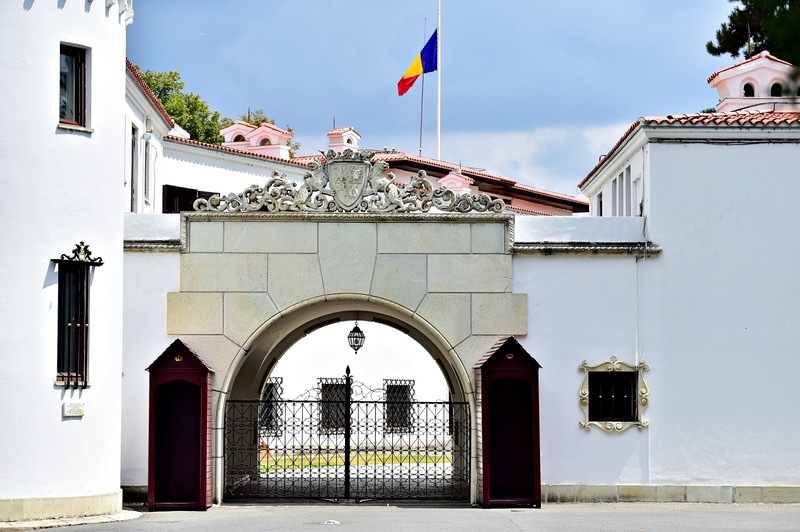
Michael Hohenzollern-Sigmaringen, in Romania known as Mihai I became the king of his homeland in 1940. It wasn’t his first time – between 1927 and 1930 he held the same title, but due to his age (5 years old on the day of coronation) he didn’t rule. The regents didn’t become popular and in 1930 Michael’s father Carol returned from Paris to become the ruler.
Carol II was an ambitious person who wanted to increase his political power and influence. He was also considered to be a supporter of Western democracies. The far-right Garda le Fier (Iron Guard) and pro-German politicians opposed this policy.
When pro-Axis Ion Antonescu became a Prime Minister he decided to secure his rule in Romania and forced Carol to abdicate. On 6th September 1940 19-years-old Michael became a king again.
A figurehead
The new fascist government had no interest in giving any power to the young king. In theory he had the power to choose the Prime Minister and was the head of the Army, but in reality it was Marshal Antonescu who was making all decisions. Michael was just a person to appear on photographs and meet other politicians.
In 1941, he and his mother – Princess Helen of Greece and Denmark – visited Berlin where they had lunch with Adolf Hitler. The same year he met Benito Mussolini in Italy. Position of the king changed in the second half of 1944.

Coup d’etat and end of WWII
In 1944 it was clear that the Red Army was on the way to victory in the conflict. Michael I wanted to save his country from the occupation, so he started to make contacts with anti-fascist politicians. On 23rd of September, after the defeat of the Romanian 4th Army by the Soviet forces, Michael tried to persuade Antonescu to leave the war, but the dictator refused. Mihai ordered the arrest of Marshal and led the successful coup against the fascist government.
In the night the king made a speech on the radio in which he announced a ceasefire with the Allies. Romania switched sides in the war and the Soviet march accelerated.
By 12th of September they occupied all Romanian territories. Next day the ceasefire was officially signed. Romanian soldiers participated in the fights in Yugoslavia, Northern Transylvania and Czechoslovakia on the Allied side.
Soviet occupation

The Soviets surely weren’t allies Michael and his supporters wanted to cooperate with. Joseph Stalin had a plan to build a sphere of influence in Eastern Europe. It didn’t provide for a conservative monarchy on the border with Ukrainian SSR. He also wanted to reclaim lands acquired in 1940: Bessarabia and Northern Bukovina.
Nevertheless, at the beginning he decided to act in a way which wouldn’t provoke the UK and USA to declare a war on the Soviet Union. With the Red Army in Romania and control of the Allied Control Commission he could influence the situation there.
Soon the Romanian Communist Party began to rise in power. Communist politicians were speaking only about moderate ideas, thanks to that their popularity increased. At the same time the number of pro-communist protests was growing in size.
After the Yalta Conference (February 1945) the Red Army intervened in Romania to end unrest. Marshal Rodion Malinowski forced the king to create a new government dominated by communists, led by Petru Groza.
The Soviets were still hiding their intentions. In July 1945 Mihai was decorated with the Order of Victory “for the courageous act of radical change in Romania’s politics towards a break-up from Hitler’s Germany and an alliance with the United Nations, at the moment where there was no clear sign yet of Germany’s defeat”. Mihai was still thinking about the problems of his country, however.
Struggle with the communists
In August 1945 he asked all great powers to help him build a government which would represent all political forces, but he received no support. In this situation he changed strategy and asked Petru Groza to resign. Groza refused, which was an unprecedented act in Romanian politics. What followed was the “Royal Strike” – the king refused to sign any new decrees and laws announced by the de facto communist government. This way he wanted to force his political opponents to resign and later on replace them with a new government based on one of the opposition parties – either National Liberal Party or National Peasant’s Party.
In January 1946 Groza agreed to make some concessions and added two ministers – one from each opposition party – to his government. In May new elections took place and – according to the official results – communist received 69% of votes. Opposition parties claimed that the results were fake, but the king didn’t protest, as he feared that he would lose the throne.
Abdication
On 10th of February 1947 Romania signed the Treaty of Paris – treaty between Allies and German Axis allies in WW2. It sealed the fate of Romania and allowed the Red Army to stay in the country. Communists were finally able to act as they wanted, before the treaty they had to maintain positive relations with the Western Powers. The government began to arrest opposition politicians under charges of being American spies (for example liberal politicians who supported Marshall Plan).

In November, Michael attended the wedding of British Queen Elisabeth II and Prince Philipp. There, he turned down the offer to receive asylum in Great Britain. On the 30th of December, while preparing for the New Year’s party in his castle in Sinaia, he was called to Bucharest by the government politicians. Prime Minister Groza and Gheorge Gheorgiu-Dej, head of communist party met him there in his residence and asked to abdicate.
Suddenly, the palace was surrounded by the soldiers loyal to the communists. Michael was unable to contact his supporters, because the phones were damaged. Groza threatened that the police would execute about 1,000 loyalist students arrested during protests if he didn’t sign the document.
Fearing civil war and deaths of many Romanians, Michael agreed to abdicate. 4 days later, on 3rd of January 1948, the former king left Romania.
Many sources give different accounts on how much of his private property was he allowed to take with him from his homeland. According to documents revealed by the British Foreign Office, the value of his assets in the beginning of exile was 500,000 Swiss Francs. Some sources claim that communists even supplied him with their own money just to make him leave Romania sooner, but throughout his life he continued to dismiss these statements as fake.
Mihai Hohenzollern-Sigmaringen died on 5th of December 2017. If he had kept his throne until his death, he would have been the longest reigning sovereign monarch of all time (77 years and 91 days).
Bartłomiej Dmowski, DP1